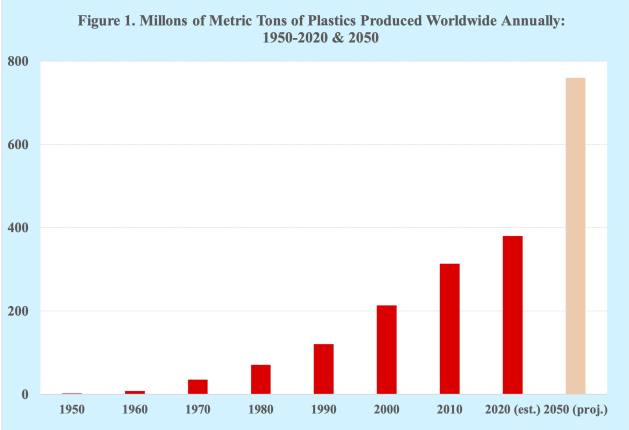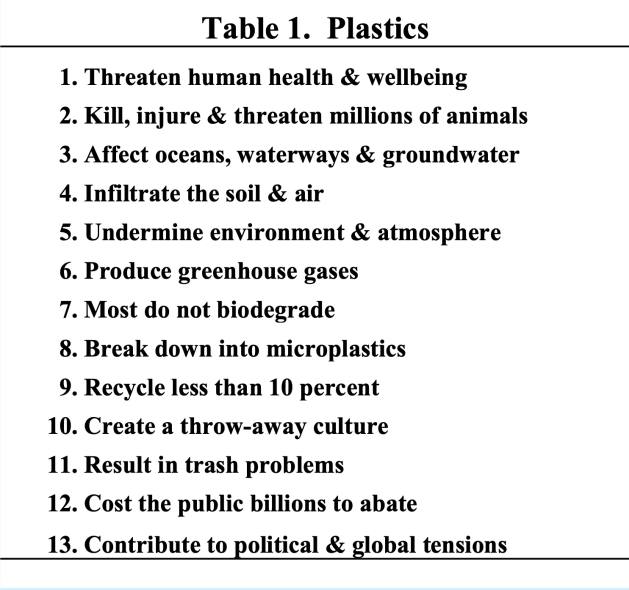
Today, plastics are ubiquitous, pervading all aspects of human activity and invading all dimensions of the environment, with the result being the emergence of planet Plastics. Credit: Albert Oppong-Ansah/IPS.
PORTLAND, USA, Mar 21 2022 (IPS) – Planet Earth is increasingly being transformed into planet Plastics. Approximately metric tons of plastics are produced worldwide annually. Those plastics amount to about 50 kilograms, or 110 pounds, every year for each of the human inhabitants living on the unfolding planet Plastics.
The Garden of Eden with all its wonderful flora and fauna did not contain plastics. None of the world’s sacred religious texts refer to or mention plastics. Also, in the great historical works of literature, drama, philosophy, mathematics, science, music, and art, one does not read, think, hear, see, or feel plastics.
Yet today, plastics are ubiquitous, pervading all aspects of human activity and invading all dimensions of the environment, with the result being the emergence of planet Plastics. From birth to death plastics have become an integral part of human daily life and infiltrated the planet’s environment. Without plastics, it is difficult to imagine how human populations would function.
Plastics can be found everywhere on the planet, including oceans, waterways, air, forests, plains, cities, towns, farms, highways, , buildings, furniture, , transport, factories, sewers, beaches, mountains, and animal life. Plastics have also made it to Earth’s upper atmospheres, the Moon, Mars and beyond.
Plastics first appeared on planet Earth at the start of the 20th century and with their discovery began the start of the . The first fully synthetic plastic was invented by Belgian chemist in 1907. His plastic, which he named Bakelite, was a combination of two chemicals, formaldehyde and phenol, made under pressure and heat.
Facilitating the rapid growth of the plastics industries was the utilization of waste materials from the processing of crude oil and natural gas, including ethylene gas. Industrial experimentation lead to various forms of plastics, the most abundant being . In brief, plastics are made mostly from , i.e., oil and natural gas, through a process that is energy intensive and emits greenhouse gases.
By the middle of the 20th century the annual production of plastics increased rapidly to about 2 million metric tons. Seventy years later the annual production of plastics worldwide reached approximately metric tons, or two hundred times the amount of plastics that was produced in1950. And by 2050 the annual production of plastics is projected to be twice the 2020 level (Figure 1).

Source: Our World in Data.
Plastics have created an alarming global culture. It is estimated that single-use plastics represent about of the annual production of plastics.
The recycling of plastics remains at a relatively low level worldwide. Recycling is estimated to account for less than of all plastics produced every year, with more than metric tons of plastics being dumped in the oceans annually. Moreover, without needed to address that dumping, the amount of plastic trash flowing into the oceans every year is expected to nearly by 2040.
The primary reason why less than a tenth of plastics produced annually are recycled is the cost. For the plastics industries the of recycling are far greater than the costs of producing new plastics.
Consequently, the cumulative worldwide amount of plastics is many times more than the annual production. Since the end of World War II, it is estimated that close to 10,000 million metric tons of plastics have been produced globally (Figure 2).

Source: Our World in Data.
Most of those plastics were produced relatively recently. About two-thirds of all the plastics in the world today were manufactured since the start of the 21st century. In addition, by mid-century the cumulative amount of plastics produced is projected to nearly triple and be to the weight of all the fish in the oceans.
The consequences of plastics read like a science-fiction doomsday novel. In brief, the novel’s plot involves invisible aliens from outer space taking over planet Earth by encouraging humans to exterminate themselves through the exponential accumulation of plastics.
In addition to being a serious threat to human and wellbeing, the increasing production and use of plastics are undermining the planet’s natural environment. Plastics are polluting the soil, , oceans, and waterways, entering the , killing and injuring wildlife and damaging habitats, producing greenhouse gases that contribute to global warming, and creating hazardous chemicals (Table 1).

Source: Author’s compilation.
Most plastics do not biodegrade and therefore remain in the environment for of years. Consequently, those plastics often break down into , which are small pieces of plastics, including fibers, microbeads, fragments, nurdles, and foam. The various forms of microplastics are contaminating the planet’s land, oceans, water, air, food and increasingly living organisms.
The low level of recycling plastics has also resulted in enormous global plastic trash problems that cost the public billions to abate. Attempts to deal with the plastics trash are also contributing to contentious political issues and tensions among nations.
A global adopted by more than 180 countries in 2019 aims at restricting the exporting of plastics trash from wealthy countries to poor countries. However, some countries have been able to get around the restrictions and continue exporting plastics trash.
Also, in March representatives of 175 countries agreed to begin writing a legal binding aimed at addressing the exponential growth of plastic pollution as well as its impact on climate change and biodiversity loss. In addition to improving recycling efforts and cleaning up plastics trash, the treaty is to include curbs on the production of plastics and may even include a on single-use plastics.
At the country level, various are being taken to address some of the causes contributing to plastics pollution. Some countries, for example, have the use of plastic bags for bagging groceries. have also eliminated the use of bottles, cutlery, straws, and coffee stirrers made from plastics.
In addition to the actions and policies of governments, important steps can be taken by individuals to curb the emergence of planet Plastics. People can reduce their use of plastics, particularly disposable plastics, plastic water bottles, and plastic grocery bags and support policies and programs for recycling and reusing plastics.
Public information campaigns can also contribute to responsible behavior regarding the use, reuse, recycling, and disposal of plastics. Educational programs, especially in elementary schools, can be effective in creating awareness about the detrimental effects of plastics on the planet.
Furthermore, with the aim of reducing the growing accumulation of billions of metric tons of plastics and limiting the plastics pollution of the environment, the private sector can produce and use less plastics. And very importantly, the major industries that produce and those that extensively utilize plastics should take the lead in establishing, promoting, and facilitating worldwide for recycling and reusing plastics.
The available indicators on the production, consumption, recycling, reuse, and disposal of plastics all point to the same outcome, namely, a ruinous worldwide transformation of the environment. However, it is not too late to take actions to arrest the transformation of planet Earth into planet Plastics and by so doing contributing to an opportunity to return to a semblance of the original Garden of Eden.
Joseph Chamie is a consulting demographer, a former director of the United Nations Population Division and author of numerous publications on population issues, including his recent book, Births, Deaths, Migrations and Other Important Population Matters.